The best touring bikes will enable you to cover the miles in comfort and fully laden. Here are our top picks on the market, as reviewed by the BikeRadar test team.
Any bike can feasibly be used as a touring bike – gravel and adventure bikes, road bikes, flat-bar hybrid bikes, and even mountain bikes are all perfect candidates to be turned into a competent horizon-seeking touring wagon.
However, there are some distinct advantages offered by a traditional touring bike.
A comfortable and upright ride position, plentiful mounts to easily fit copious amounts of luggage, additional water bottle mounts, overbuilt framesets – most often made of easily repaired steel – and wide tyre clearances are all hallmarks of a good touring bike.
These features make them easy to live with on long expeditions.
Here, we've focused on more traditional touring bikes designed explicitly for long, slower-paced days in the saddle, loaded with panniers and luggage.
For more info, check out our buyer's guide to touring bikes at the bottom of this page.
Check out our standalone guide for a more in-depth look at what a touring bike is and how it compares to an adventure or bikepacking bike.
Editor's note: this list was updated on 16 April 2025 with our latest touring bike reviews, including the Genesis Tour de Fer 20. We have also included insight into how we test touring bikes and why you can trust BikeRadar.
Best touring bikes in 2025, as rated by our expert testers
Spa Cycles Wayfarer

- £1,400 as tested
- Pros: Comfortable touring geometry; quality wheels and kit
- Cons: Tight clearances with wider tyres
Spa Cycles calls the Wayfarer "expedition focused". Its Reynolds 725 steel frame is well finished and it's equipped with a Shimano Sora 9-speed triple chainset with a 28x34t lowest gear. It rolls on hand-built tubeless-ready wheels with 50mm-wide Panaracer GravelKing or 32mm Schwalbe Marathon tyres.
There's a Brook Cambium saddle and FSA Wing bars with a nice shape. The only things our bike was lacking were dynamo lights and a kickstand, both of which you could add to the spec.
The Wayfarer is stable with an upright ride and excellent long-distance comfort, great for the commute and leisure rides, not just long-range touring.
- Read more: Spa Cycles Wayfarer review
Genesis Tour de Fer 20
SQUIRREL_TEXT_13204201

- £1,500 / €1,799 as tested
- Pros: Wide-ranging gears; mudguards and racks included; comfortable; well-priced
- Cons: Heavy; brakes could be better
The Tour de Fer 20 offers impressive comfort and comes with all the racks, mounts and mudguards needed for bike touring.
Its 4130 chromoly steel frame absorbs road buzz and bumps with ease, giving it a pleasant ride feel for long days in the saddle, and it should be easily repairable on the road.
While the bike is on the heavy side, it represents good value for money.
- Read more: Genesis Tour de Fer 20 review
SQUIRREL_13204201
Oxford Bike Works Model 1E

- £1,440 / $2,454 as tested
- Pros: Bespoke service and fitting
- Cons: Cheap decals feel out of place on a premium bike
The Oxford Bike Works Model 1E's classy-looking fillet brazed steel frame is made in England.
There's a Shimano Deore single-chainring groupset with a wide-range cassette, but it's operated by a bar-end shifter rather than an integrated brake/shift lever. V-brakes take care of stopping, although you can upgrade to discs if you prefer.
The bike rolls nicely on its 32mm tyres and is smooth and comfortable. There are mounts for racks and mudguards and Oxford Bike Works includes a free fit with your purchase and a one-year comfort guarantee, where it will swap out any contact points that you don't get on with.
- Read more: Oxford Bike Works Model 1E review
Ridgeback Panorama
SQUIRREL_13155156
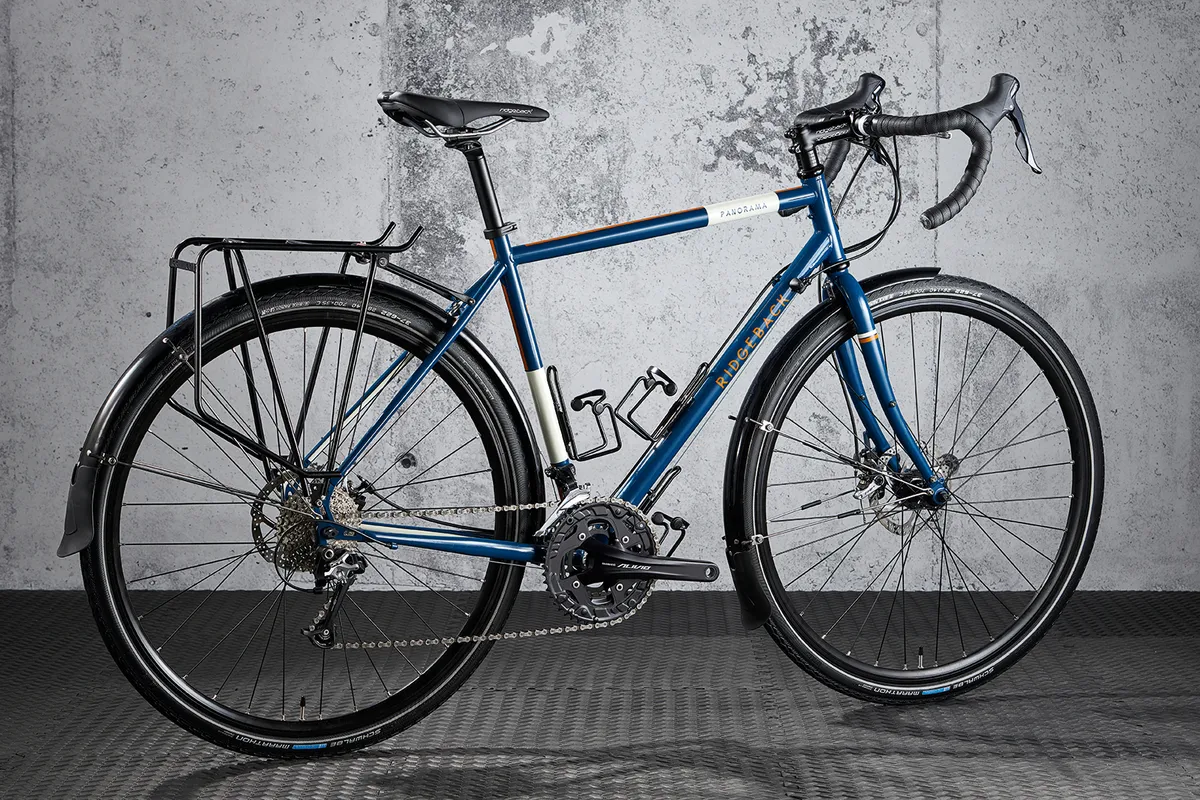
- £1,400 as tested
- Pros: Super wide-range, touring-friendly gearing
- Cons: Heavy even when unladen
Ridgeback’s Panorama features a highly reliable Reynolds 725 steel frame, which is matched with a Chromoly steel fork.
A triple (48/36/26t) Shimano chainset is paired with a wide-range 11-34t cassette, giving super-wide, loaded-climb-friendly gearing. In-line brake levers are also a rare and welcome addition to this bike.
The generous spec extends to the accessories, and the bike ships with three bottle cages, mudguards and a rear rack as stock.
- Read more: Ridgeback Panorama review
SQUIRREL_13155156
Ridgeback Expedition
SQUIRREL_TEXT_13155084
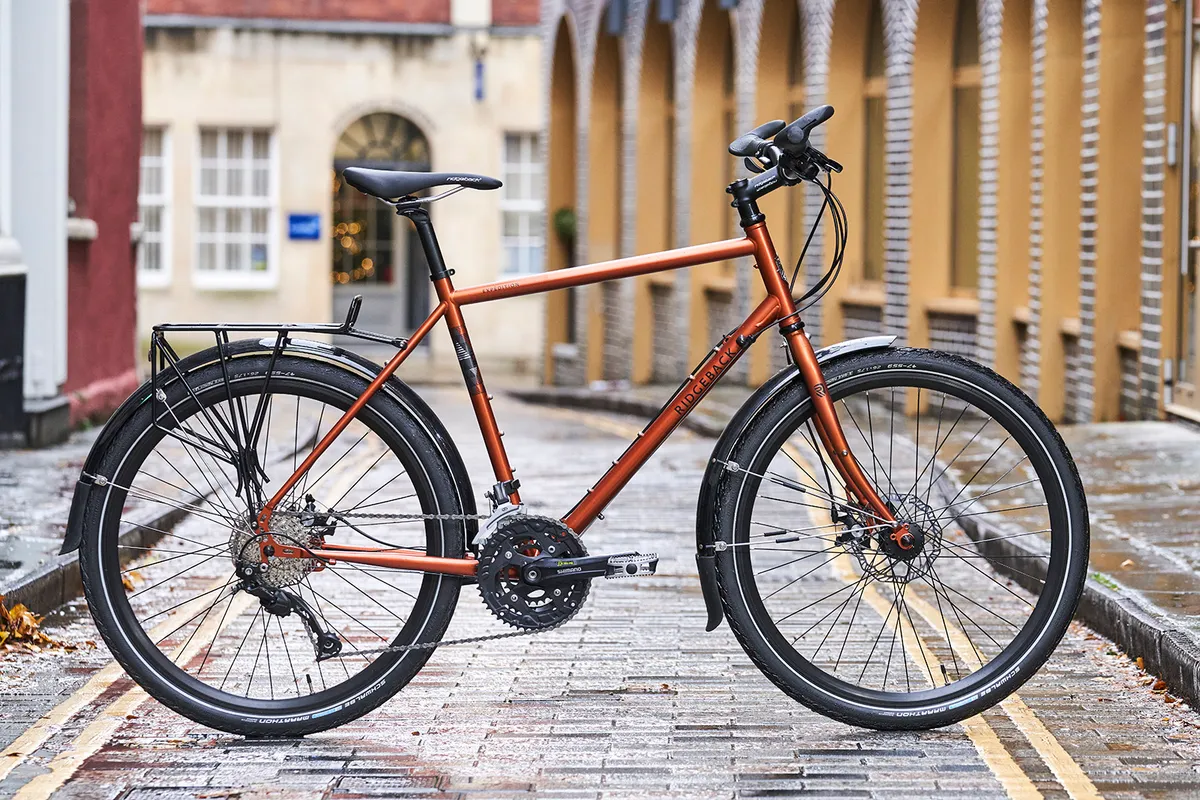
- £1,350 as tested
- Pros: Wide gear range; tough tyres
- Cons: Lacklustre braking performance; heavy
Rolling on 26in wheels, the Ridgeback Expedition is a great touring bike for far-flung expeditions.
While mechanical disc brakes lack the sheer power of hydraulic brakes, a full suite of useful accessories help makes up for these shortcomings.
- Read more: Ridgeback Expedition review
SQUIRREL_13155084
How we test touring bikes

We test touring bikes on a variety of surfaces and often take in multi-day bike tours to test their capabilities.
Our team have tested hundreds of touring bikes over the years, giving them a unique understanding of what separates the good from the bad.
Ultimately, our touring bike reviews are based on the following criteria:
- Versatility – how versatile is the bike and does it double up as a commuter or winter hack?
- Storage – how much can the bike carry? Are there plenty of mounts?
- Accessories – does the bike come with touring accessories, and what quality are they?
- Comfort – how comfortable is the bike for long days in the saddle?
- Price – does the bike represent a good deal compared to the competition?
Why you can trust BikeRadar
BikeRadar has been an authority on bikes and cycling tech since its inception in 2007, delivering the world’s best riding advice.
We have experts testing all types of bikes, parts, clothing and accessories, from road, mountain and gravel bikes to commuting, bikepacking and electric bikes.
Our reviews are always editorially independent – with no exceptions. Our reviewers comprehensively test all products in the real world, always reflecting on performance, value and the wider market when delivering their verdicts and review ratings.
We have more than 15,000 product reviews available at your fingertips, as well as expert buying, maintenance, training, skills, health and fitness advice.
Our annual Bike of the Year test is an industry benchmark and the BikeRadar team consists of some of the most experienced riders and testers in the business.
What to look for in a touring bike
Panniers and bags
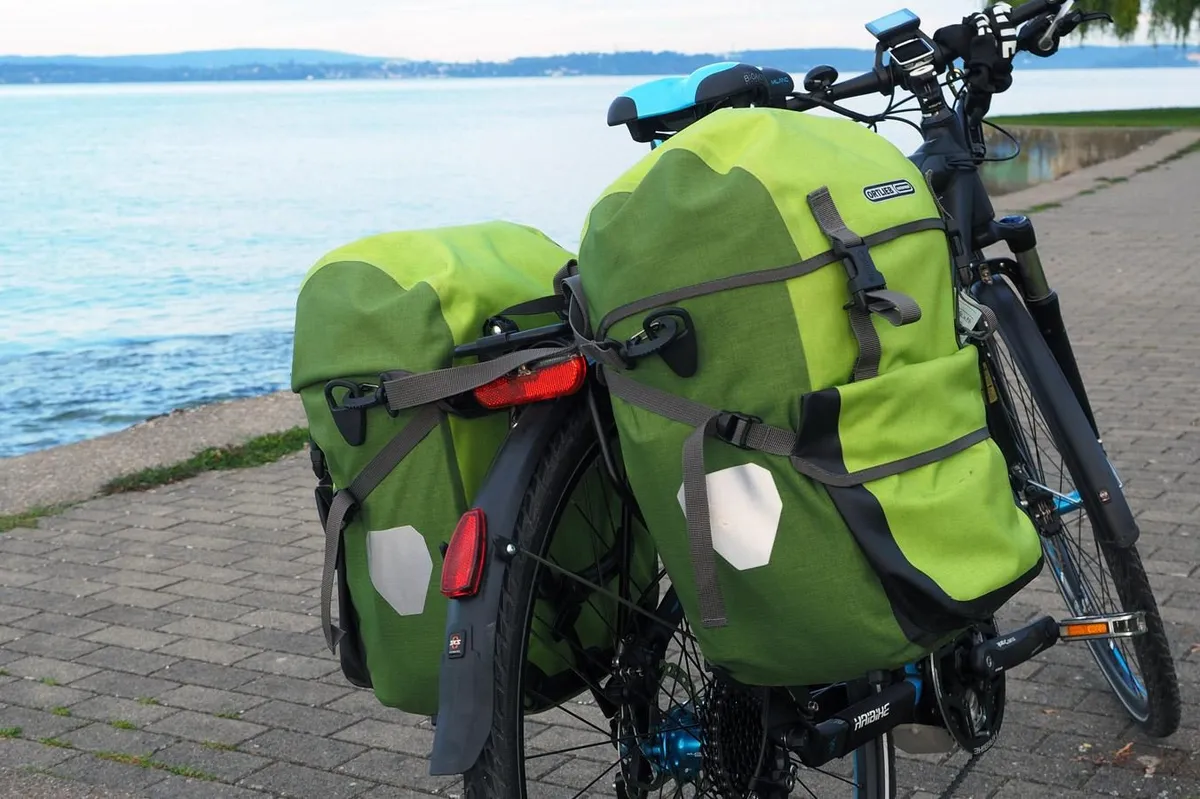
Now you’ve got a suitable bike, what else will you need to get started with touring?
Working out how you want to carry your gear is a good place to start.
Don’t be tempted to use a rucksack – it’ll just hurt your back and leave you with a damp, sweaty patch. Touring bikes are designed with carrying loads in mind, so get as much of it on there as you can.
A rear rack – which will come as stock on many touring bikes – and pannier bags are the most popular option. These can carry a large amount of kit and are easily removed from your bag. If you need additional storage, you can go for an extra front rack plus a handlebar bag.
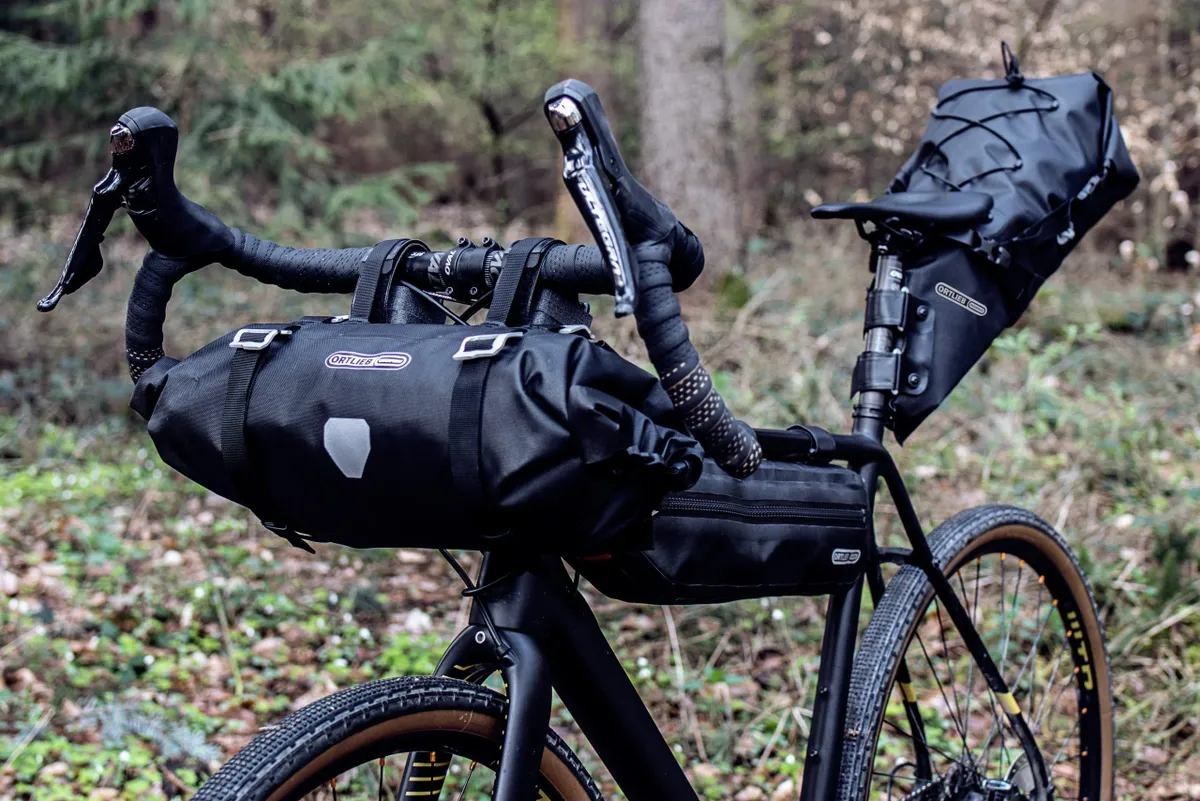
Alternatively, you could go for a more modern approach with bikepacking bags, which typically strap the luggage straight to the frame, seatpost and handlebars.
This reduces weight and can improve handling in rough terrain.
Disc or rim brakes for a touring bike?
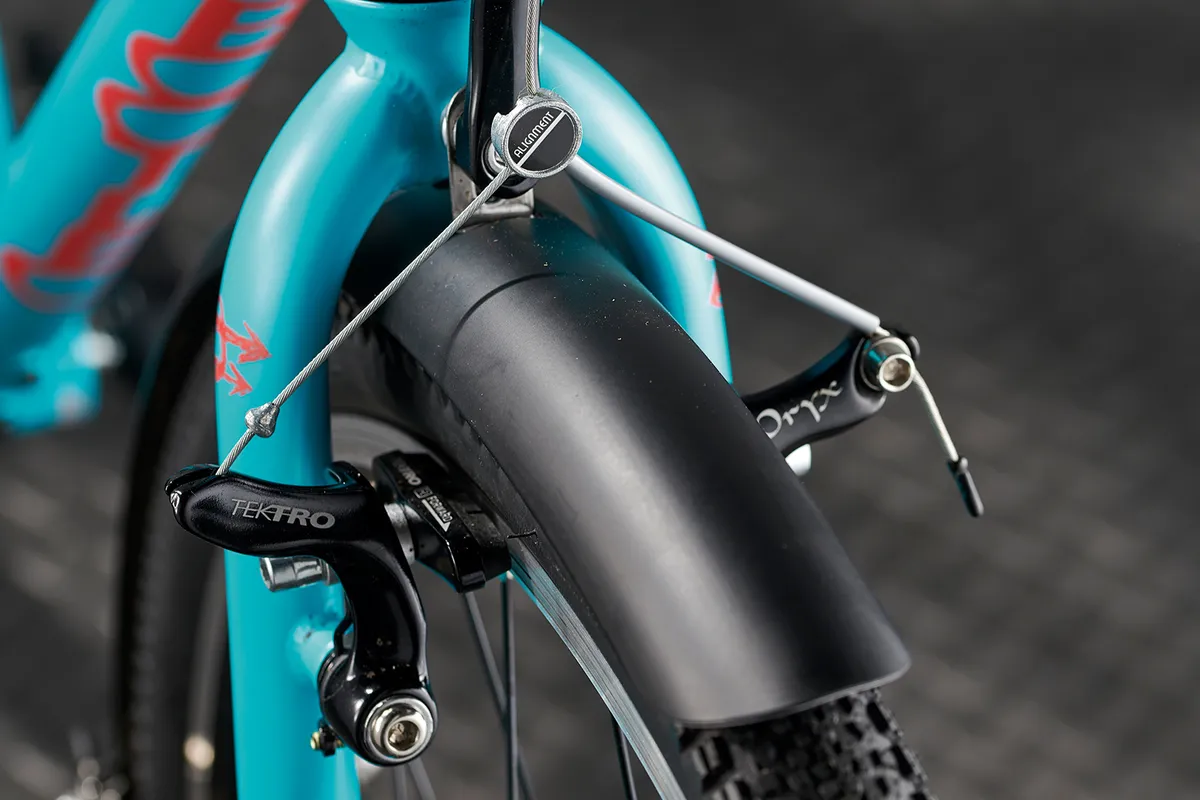
The vast majority of touring bikes will use disc brakes in place of the V-brake or cantilever brakes of old. Consequently, they will use disc-specific touring wheels, too.
Disc brakes offer superior braking power that – critically – is far more consistent in all weathers.
It is generally believed that the availability for spare parts for disc brakes is still slightly lacking in certain parts of the world compared to rim brakes. This is the only compelling case for continuing to use rim brakes.
Flat bar vs drop bar for a touring bike
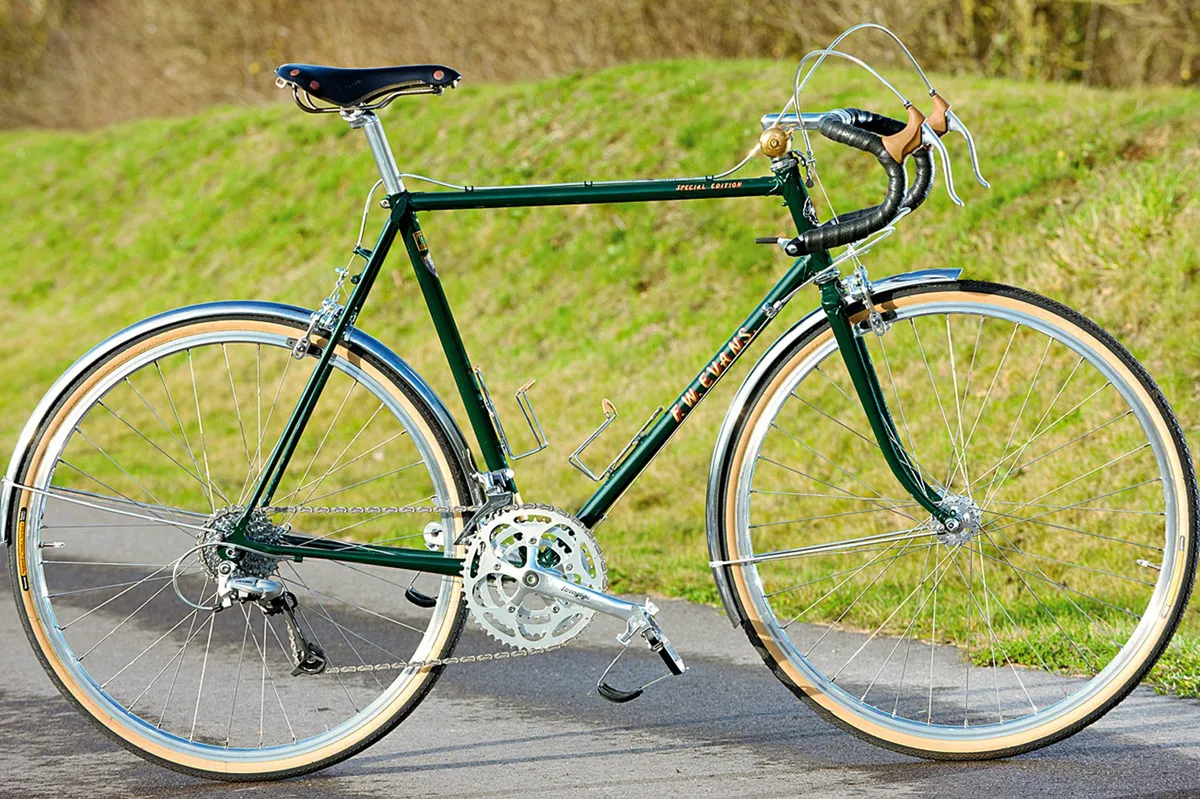
There is no right or wrong handlebar setup for a touring bike. Some will prefer the upright position and extra control a flat bar will offer, while others prefer the additional hand positions and more aero position that is attainable with a drop bar.
Here, in the UK, our vision of the prototypical touring bike usually includes drop bars, so they are more commonly seen. In Europe, the opposite is true and flat bars rule the roost.
Experimentation is the key but, because touring bikes tend to have fairly upright geometry, it’s usually possible to swap between the two down the line if you find you’re unhappy with your setup (though to do so you would usually have to, at least, also swap your brake levers and shifters).





